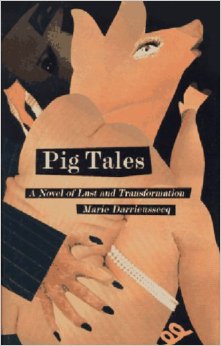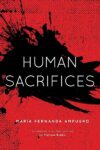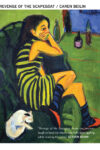 Here are three contemporary examples of violence directed toward women on (or in association with) American college campuses: in 2014, Elliot Rodger killed six UC Santa Barbara students, with the intention of killing sorority women in “retribution”; in 2010, four University of Montana football players gang raped a woman; in 2012, a Columbia University student was raped in her dorm by a fellow student. In these three examples that span our country, a proliferation of text emerged all around what happened. Rodger’s lengthy manifesto was widely viewed and read, the hashtag #YesAllWomen flooded twitter, and feminist articles authored by all genders appeared in popular public forums (shadowed by troll-style commentary). The problem of football playing perpetrators at UM has occasioned a 2015 book by Jon Krakauer, Missoula, in which he characterizes this college town as being not the worst (in terms of its rape epidemic and failure to prosecute), or the best, but sadly, average. In response to being raped and subsequently not believed, defended, or protected, by her university or the police, Columbia student Emma Sulkowicz created a performance art piece — “Carry That Weight” — for which she carried around a 50 pound dorm mattress everywhere she went, until she graduated with it in 2015.
Here are three contemporary examples of violence directed toward women on (or in association with) American college campuses: in 2014, Elliot Rodger killed six UC Santa Barbara students, with the intention of killing sorority women in “retribution”; in 2010, four University of Montana football players gang raped a woman; in 2012, a Columbia University student was raped in her dorm by a fellow student. In these three examples that span our country, a proliferation of text emerged all around what happened. Rodger’s lengthy manifesto was widely viewed and read, the hashtag #YesAllWomen flooded twitter, and feminist articles authored by all genders appeared in popular public forums (shadowed by troll-style commentary). The problem of football playing perpetrators at UM has occasioned a 2015 book by Jon Krakauer, Missoula, in which he characterizes this college town as being not the worst (in terms of its rape epidemic and failure to prosecute), or the best, but sadly, average. In response to being raped and subsequently not believed, defended, or protected, by her university or the police, Columbia student Emma Sulkowicz created a performance art piece — “Carry That Weight” — for which she carried around a 50 pound dorm mattress everywhere she went, until she graduated with it in 2015.
Text bears violence, accompanies violence, and flies off of it, in every direction.
As a creative writing instructor on an American college campus, I know that my classroom can swell with violence, with a proliferation of texts that seem to toss the female form into a shark tank of plot — the rape plot, the murder plot, the slut plot, the marriage plot. There are so many plots that prey on this form. I have spent several semesters woefully awash in female blood (O how I wish it were menstruate!). One student wrote about the slow, blood-letting murder of his narrator’s wife, which, halfway in, turns into a dream, which then turns into an expression of his desire — this narrator really hopes, his dream reveals, that she will not divorce him. When I reminded the author of our syllabus policy — “If you feel moved to write scenes that depict violence (verbal, physical, or sexual) towards marginalized groups, I ask that you schedule a meeting with me before turning in this piece of writing” — he reminded me that the murder does not actually take place; it was a dream, and besides, an expression of love. It is amazing to me, the easy (and lazy) reach of killing a woman, to express something. Of course nothing actually took place, I might have said, this is a text. This is your text.
This was my first semester using a clause in my syllabus that required students to meet with me about violence. I didn’t know exactly what would happen if they came, but like a rabbi who has goyim ask her repeatedly for a conversion, I wanted them to have to work — email me, schedule something, find my hard-to-find cubicle — I wanted to erase their ease.
I never thought I would get to this place. As an undergraduate, I was a passionate defender of Lars Von Trier films (I’m not anymore); as an MFA student, Brett Easton Ellis’s American Psycho inspired me enormously — this slice of life structure with headings like “Lunch” that just exploded into a play of seemingly infinite variation onto the repeated surface of sex, violence, and eating, it was all so Sadean, this play of repetition and extension, extending further into the obscene — I didn’t worry too much if it was sadistic. These days, two of my tomes are Kathy Acker’s Blood and Guts in High School, in which Janey, the narrator, suffers all kinds of things including gang rape — and Marie Darrieussecq’s 1996 novella, Pig Tales, which moves from rape to murder, a girl “strung up to a chandelier by her hair . . . Her insides were hanging out, bowels and all — they’d had a good time with her.”
I had to use the clause in my syllabus. I was becoming traumatized.
Why would someone who has put Sade’s Philosophy in the Bedroom in her beach bag become so triggered? Why am I simultaneously delighted (or at least, creatively energized) by the gang rape (and lip sewing) of Eugenie’s poor mom at the end of P in the B, and frankly, incredibly uncomfortable sometimes with student writing? Sometimes a little nervous to reenter the classroom. (Consequently, I am their teacher, I am sure I cause them discomfort and nervousness in infinite and infinitesimal ways all the time.)
It has to do with form. Marie Darrieussecq writes like a boss — what she wields is a formal light. I think of form as an arrangement, a repetition, a movement, a manner of the (linguistic) substance. Faҫon. It is the way. To work with form has become the work of my writing, and more than to work, to fuck with it. Sade fucked with the repetitive politesse of the popular novels that dominated his time, or as Barthes describes them, “the high, pompous cultural styles coded by centuries of orthodox literature.” Sade repeated this linguistic politesse, a formal repetition, but fucked with it (literalement!); he infused such differing content: “Take care of the front end, Madame, while I run my tongue once over this pretty little anus and apply a few slaps to these cheeks; she must be made to come at least seven or eight times in this manner, and perchance to shit in my hands.”
Perchance!
The work of fucking with form? Fucking up the norms. That cause so much pain.
Hard work can act as a gauge, a filter for caring — if you don’t care to work, maybe you don’t care enough about women. And what I worry about in the classroom — what I am trying to work out with my students — is a lack of work in violent scenes towards a marginalized group, is a use of this violence as ease, the female body the first thing to pick (this woefully heavy fruit) — is this use of violence that is wholly, and sadly, orthodox.
I will interject here that I don’t believe my students mean harm. I believe we are trying to speak. We are trying to speak creatively, and most creative work, in the most popular mediums, is so violent and so violent towards women — whether because we are killed or raped or wived or backgrounded or bashed in the head multiple times in a kitchen, in which we are serving something, or (as I just took in Jurassic World) obstinately heeled. I’m at this place — I’m not sure you can work creatively if you don’t believe in oppression, or have a curiosity about the linguistic operations of oppressive systems. Or how those operations can glom onto the victims. I believe they are victims. Believe me, I am one, too. I believe you are.
It’s not fair to square this on students — look at the world, look at things that are already out there, out ahead of them, and for them. But, a campus has to be a place of peace, and awareness. The American campus hasn’t been that, and women are the ones who often suffer here. I mourn the fact that I was an instructor at the University of Montana at the height of the era Krakauer wrote a whole book about, and we never talked about it. The syllabus I taught that semester was about sustainability, but we never talked about it. This is unsustainable. I am talking about student writing now — instead of, say, Hollywood, or Yahoo News, or this guy — because the privilege of imposing form onto a classroom, of making things less easeful, is where I can work on this sadness (see: first paragraph).
And yet, I can’t work on it by banning violence in their texts, especially when some students need to bear witness to a violence they have known, and to a violence that is all around them. When my favorite books depict it. When my own writing often does.
So I’ve decided if they want to do it, they have to do it like a boss.
Pig Tales will be on my next syllabus. Published in 1996, and author Marie Darrieussecq’s first book (the original French title is Truismes), the novella is narrated by an unnamed young white woman who aspires to a higher class, but in turn, is becoming a pig. As her body undergoes this great metamorphosis, she attracts increasing acts of sexual violence. The book is full of rape, and quite infuriatingly, is told from a site of witlessness. The narrator, who works at Perfumes Plus as a perfume seller and prostitute, doesn’t seem to know that she is abused, let alone deceived about her pay. She tells her reader about her increasing girth:
It had gotten to a point where I’d had to abandon my B cups, and the wire supports in my bras were killing me. I hadn’t received my first paycheck yet, just a tiny advance, because all the computers were down in the accounting department.
Later, when she consults with the director of Perfumes Plus about her job, “. . . he had me sit on him and he shoved something up my rear end. That hurt even more than with the clients, but he told me it was for my own good, everything would be fine afterward, and I wouldn’t have more problems.”
The narration, while it fully reports the scene, does so without discernment. Without seeing.
In fact, the propulsion of the plot is often, on a sentence-level, what foils this sight. Take this scene of embarrassment, in which the narrator is told, by her boyfriend, to undress at a restaurant:
I was a trifle embarrassed because of those black guys in loincloths who were fanning us, but they’d obviously seen it all before.
The plot of this sentence is that the narrator feels embarrassment but realizes she doesn’t have to, because those who work at this restaurant, or perhaps who are black, are used to such spectacles. This is what the narrator tells us. Marie Darrieussecq tells us something that is not even opposite of this — it’s just something else. She tells about the peril, and lower class, of the brown person in France, of colonization and the sadistic fetishization of the oppressed; loincloth absconds the sentence. Darrieussecq pours this knowing into a site of unseeing — her narrator discerning none of it, the author reserves all the knowledge, and so, all rage, for herself, for a body outside of this text, who can vote, comment, and write more books (so far, she has written nine more).
Darrieussecq works in cliché, stringing these along, as a way to surface a problem. The narrator is forced to suck her boss’s dick all couched in the language of a perfume catalogue:
And the contract specifically said that during the annual inventory clearance, I would be entitled to some cosmetics. I’d have a chance at getting the most famous brands, the most expensive perfumes! The director had me get down on my knees in front of him, and while I was hard at work, I day-dreamed about these beauty preparations, about how good I was going to smell, about the glowing complexion I’d have.
The literary theorist Mikhail Bakhtin would have us read novels as arrangements of language-images. In this passage, a luxurious and commercial language-image (“the most famous brands, the most expensive perfumes!”) is arranged all around, and in fact encloses something like a court document, a straight testimonial — “the director had me get down on my knees in front of him.” The arrangement performs a societal problem — as the young Montanan woman’s rape by four members of UM’s football team was surely enclosed by many incongruent language-images — the promotion of football games, for instance.
The theorist Monique Wittig writes, “For language, like the purloined letter of Poe’s tale, is constantly there, although totally invisible. For one sees, one hears only the meaning. Then isn’t meaning language? Yes, it is language, but in its visible and material form, language is form, language is letter.” Darrieussecq, in Pig Tales, rigorously insists on visibility — form is light. Her formal rigor, her careful and caring arrangement, her tactic, bares her comment.
I want all writers, if they want to take the female body out of their tool kit, and hurt it, to work hard. Mostly, so hard they don’t bother. My cubicle is actually really hard to find. Or so hard that they produce something that shows us what’s going on — that they know what’s going on.
This post may contain affiliate links.







